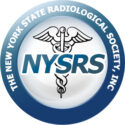THE NEW YORK STATE RADIOLOGICAL SOCIETY, INC.
A CHAPTER OF THE AMERICAN COLLEGE OF RADIOLOGY
www.nysrs.org
NYSRS Statement on Digital Breast Tomosynthesis
The New York State Radiological Society (NYSRS) is the New York State chapter of the American College of Radiology (ACR) and represents 1523 diagnostic radiologist and radiation oncologists practicing in NY state. The NYSRS is committed to reducing breast cancer mortality by optimizing women’s access to effective breast cancer screening. Regular mammography is the mainstay of breast cancer screening, with ample data to support its efficacy in reducing breast cancer deaths [1]. Full-field digital mammography became widely utilized over the last decade as studies showed its improved accuracy over traditional film-screen mammography [2].
Digital breast tomosynthesis (DBT) is an application of digital mammography that allows for 3-dimensional (3-D) imaging of the breast. Multiple studies performed over the last three years have shown that it has improved accuracy over full-field digital mammography, demonstrating both an increased cancer detection rate and a decrease in false positive results; that is, results that lead to additional testing in women who do not have breast cancer[3-11]. Thus, DBT has the potential to decrease both breast cancer mortality and the anxiety and costs associated with known limitations of traditional 2-dimensional (2-D) mammography.
Widespread availability of DBT will facilitate research assessing long term clinical outcomes and identification of subgroups of women most likely to benefit from the examinations. As with any medical examination, availability is greatly impacted by reimbursement for the service provided. Interoperability among different DBT and Radiology Picture Archiving and Communication System (PACS) vendors is another essential factor for optimizing patient access. In the state of NY, there are currently over 80 sites that have implemented DBT.
The US Food & Drug Administration (FDA) approved DBT in 2011 for the same indications as traditional 2-D mammography including breast cancer screening, diagnosis, and intervention. The Centers for Medicare and Medicaid Services (CMS) recently included payment codes and reimbursement rate values for DBT in its final 2015 Medicare Physician Fee Schedule (MPFS) and Hospital Outpatient Prospective Payment System (HOPPS) and will be covering DBT as of January 1, 2015. Along with the ACR, the NYSRS supports CMS’s decision and strongly urges private insurers to cover beneficiaries for DBT as a medically necessary alternative and supplement to 2-D mammography for screening and diagnosis of breast cancer and to ultimately facilitate women’s access to these important exams.
- Feig, S.A., Current status of screening mammography. Obstet Gynecol Clin North Am, 2002. 29(1): p. 123-36.
- Pisano, E.D., et al., Diagnostic Performance of Digital versus Film Mammography for Breast-Cancer Screening. New England Journal of Medicine, 2005. 353(17): p. 1773-1783.
- Skaane, P., et al., Comparison of digital mammography alone and digital mammography plus tomosynthesis in a population-based screening program. Radiology, 2013. 267(1): p. 47-56.
- Ciatto, S., et al., Integration of 3D digital mammography with tomosynthesis for population breast-cancer screening (STORM): a prospective comparison study. Lancet Oncol, 2013. 14(7): p. 583-9.
- Haas, B.M., et al., Comparison of tomosynthesis plus digital mammography and digital mammography alone for breast cancer screening. Radiology, 2013. 269(3): p. 694-700.
- Rose, S.L., et al., Implementation of breast tomosynthesis in a routine screening practice: an observational study. AJR Am J Roentgenol, 2013. 200(6): p. 1401-8.
- Friedewald, S.M., et al., Breast cancer screening using tomosynthesis in combination with digital mammography. JAMA, 2014. 311(24): p. 2499-507.
- Greenberg, J.S., et al., Clinical performance metrics of 3D digital breast tomosynthesis compared with 2D digital mammography for breast cancer screening in community practice. AJR Am J Roentgenol, 2014. 203(3): p. 687-93.
- Lourenco, A.P., et al., Changes in Recall Type and Patient Treatment Following Implementation of Screening Digital Breast Tomosynthesis. Radiology, 2014: p. 140317.
- Lee, C.I., et al., Comparative Effectiveness of Combined Digital Mammography and Tomosynthesis Screening for Women with Dense Breasts. Radiology, 2014: p. 141237.
- McCarthy, A.M., et al., Screening outcomes following implementation of digital breast tomosynthesis in a general-population screening program. J Natl Cancer Inst, 2014. 106(11).
